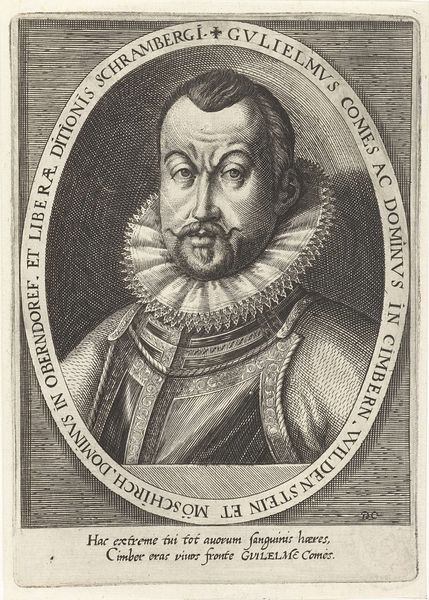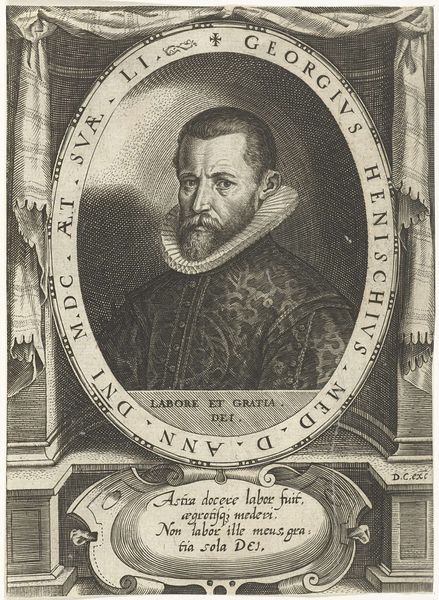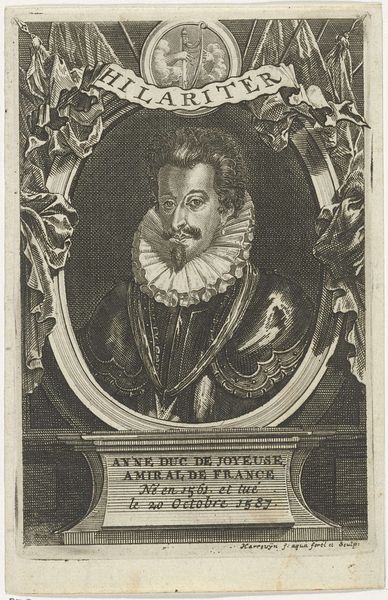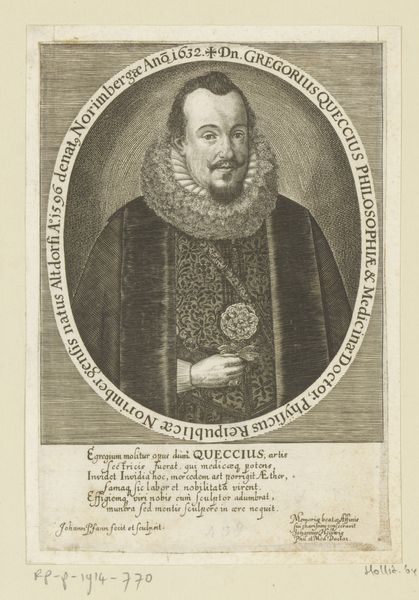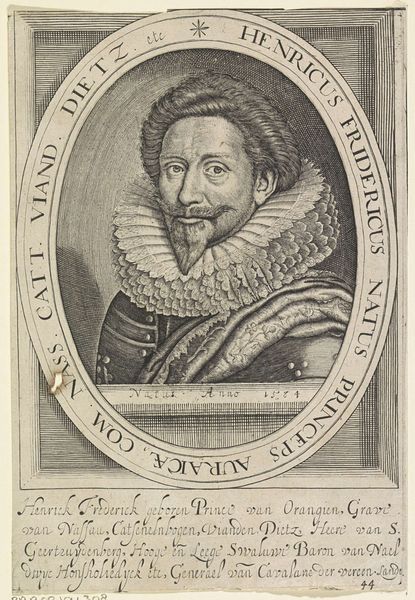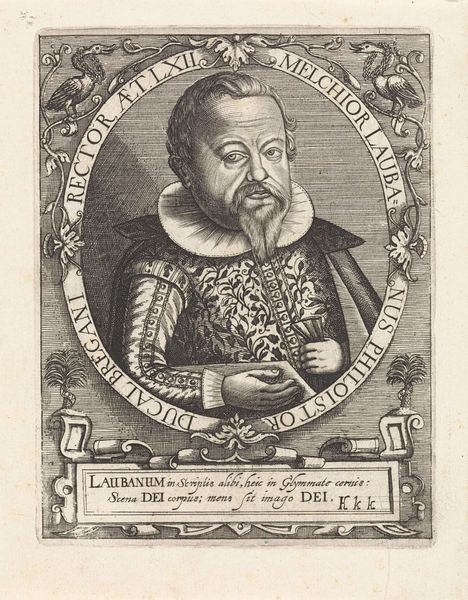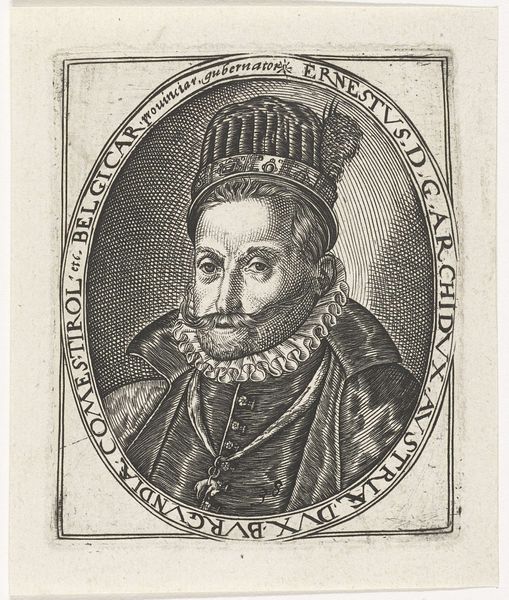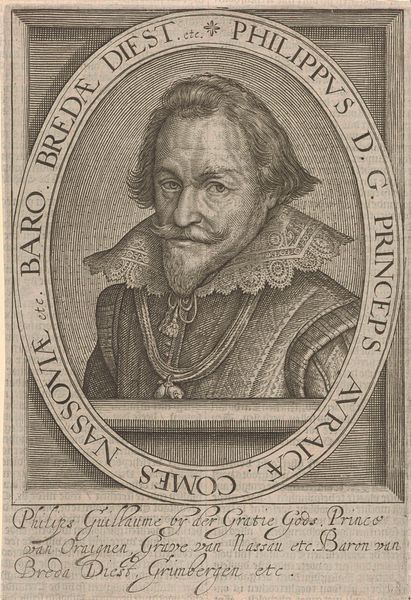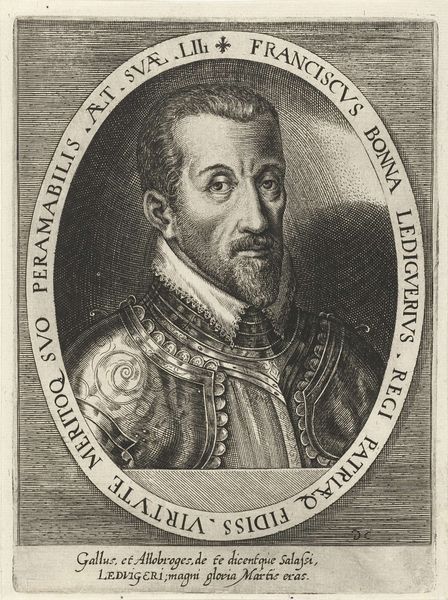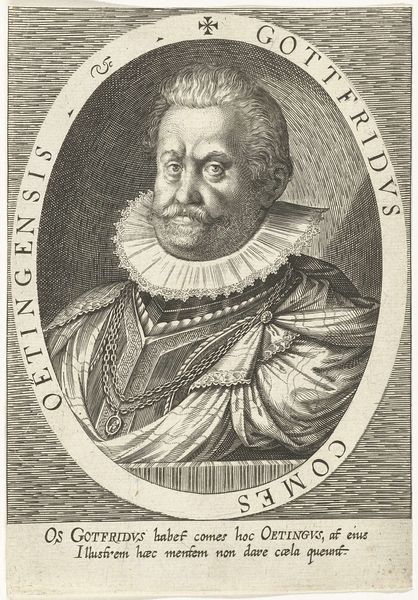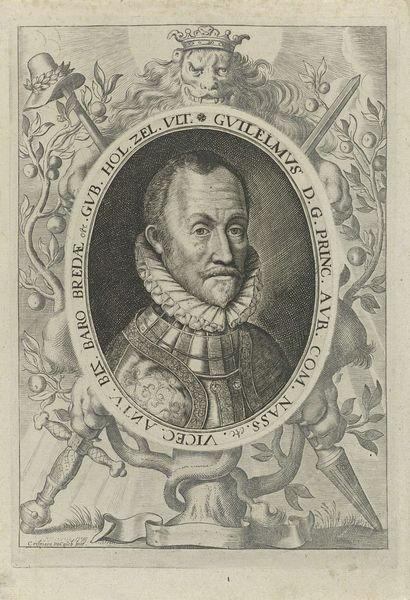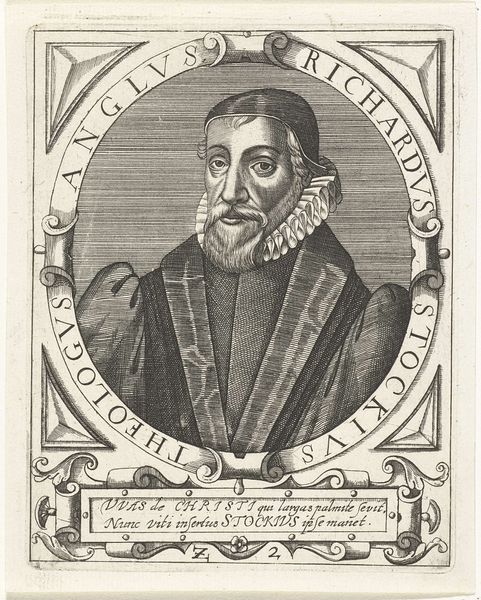
print, graphite, engraving
portrait
aged paper
old engraving style
11_renaissance
graphite
history-painting
northern-renaissance
engraving
historical font
Dimensions: height 187 mm, width 125 mm
Copyright: Rijks Museum: Open Domain
Editor: Here we have a print entitled "Portret van Georg Frederik van Baden," created sometime between 1579 and 1615. The artist is Dominicus Custos. It's quite detailed, especially considering it’s an engraving. What really strikes me is how the armor and lace collar contrast with the softness of his face. What do you see in this piece? Curator: The enduring appeal of portraiture lies in its symbolic language. Notice how the circular frame mirrors halos, immediately positioning Georg as someone of note, almost sanctified in print. The text surrounding the image is key—are we looking at mere vanity, or something more carefully constructed? Editor: So, it’s less about capturing a likeness and more about conveying status? Curator: Indeed. Armor wasn’t everyday wear, right? Its presence communicates military strength, leadership, valor. Consider too the crisp ruff collar - a symbol of wealth, precision, and controlled order. Look how all of those repeated shapes add up. This visual language transmits clear cultural values of leadership and the aristocracy. What sort of weight does this calculated symbolism give to the print in your eyes? Editor: It feels less personal and more like a carefully crafted public image. I'm starting to think it's a propaganda piece in some way. Curator: Precisely! A reminder of lineage, power, and perhaps a specific political agenda. These aren't simply aesthetic choices, but rather encoded messages meant for a specific audience. Editor: That makes me see the portrait, and the man himself, in a whole new light! Thanks for the insight.
Comments
No comments
Be the first to comment and join the conversation on the ultimate creative platform.
